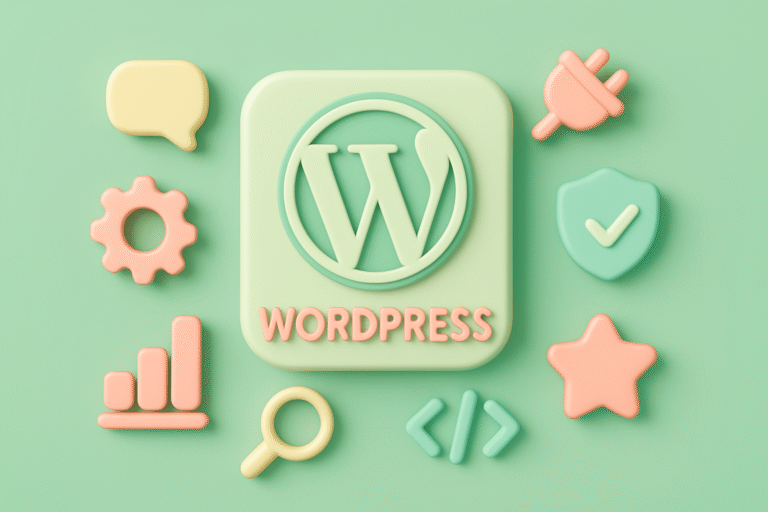
WordPress Security Best Practices: Plugins and Tips to Protect Your Website
In today’s digital landscape, ensuring the security of your WordPress website is more critical than ever. With millions of websites powered by WordPress, it has become a prime target for hackers and malicious actors. Whether you’re a beginner, a small business owner, or a seasoned developer, implementing robust security measures is essential to protect your site’s data, maintain user trust, and avoid costly downtime.
This article dives into essential WordPress security best practices, highlighting top plugins and practical tips to safeguard your website effectively.
Understanding the Importance of WordPress Security
WordPress is inherently secure, but no platform is immune to vulnerabilities. The open-source nature of WordPress means that while many developers contribute to its security, it also makes the software a common target for hackers exploiting outdated plugins, weak passwords, or misconfigurations.
Common threats to WordPress sites include:
- Malware injections
- Brute force login attacks
- SQL injections
- Cross-site scripting (XSS)
- Unauthorized access via outdated plugins/themes
Addressing these risks proactively helps prevent data breaches, reputational damage, and loss of revenue. For more detailed information on these threats, you can refer to the web application security overview.
Essential WordPress Security Plugins to Consider
Leveraging the right plugins can drastically improve your site’s defenses without requiring extensive technical skills.
1. Wordfence Security
Wordfence is one of the most popular all-in-one security solutions for WordPress. It offers:
- Firewall protection to block malicious traffic
- Malware scanning for themes, plugins, and core files
- Brute force attack prevention with login rate limiting
- Real-time threat defense feed
- Detailed security incident reports
Wordfence’s user-friendly dashboard makes it accessible for beginners while offering advanced features for developers. Visit the official Wordfence website to learn more.
2. Sucuri Security
Sucuri is a cloud-based security platform focusing on website monitoring and malware removal. Key features include:
- Website firewall (WAF) to filter out malicious requests
- Security activity auditing
- Malware scanning and blacklist monitoring
- Post-hack security actions and cleanup services
Its strong emphasis on incident response is ideal for site owners looking for comprehensive protection and support. Explore more at the Sucuri official site.
3. iThemes Security
iThemes Security provides over 30 ways to secure your WordPress site, including:
- Strong password enforcement
- Two-factor authentication (2FA)
- File change detection
- Database backups and protection
- Locking down suspicious IP addresses
This plugin is well-suited for users wanting granular control over multiple security layers.
4. Loginizer
Loginizer specializes in protecting the login page by:
- Limiting login attempts to prevent brute force attacks
- Enabling reCAPTCHA on login forms
- Blocking suspicious IP addresses
- Enforcing strong password policies
It’s a lightweight plugin focused on one of the most vulnerable points of WordPress websites.
Best Practices Beyond Plugins
While plugins are invaluable tools, security is a multifaceted discipline. Implement these best practices to complement your plugin setup:
Keep WordPress Core, Themes, and Plugins Updated
Outdated software is the most common entry point for attacks. Regularly update your WordPress core, themes, and plugins to patch known vulnerabilities. Consider enabling automatic updates where possible, but test updates on staging environments if you manage complex sites.
Use Strong Passwords and Enable Two-Factor Authentication
Weak passwords are a security liability. Use unique, complex passwords for all user accounts, especially administrators. Enabling two-factor authentication (2FA) adds an extra layer of security by requiring a second verification step during login. For guidance on 2FA, see the Authy explanation of two-factor authentication.
Limit Login Attempts and Change Default Login URL
By default, WordPress login pages are accessible at /wp-login.php or /wp-admin. Changing the login URL via plugins like WPS Hide Login can minimize automated login attacks. Additionally, limiting login attempts helps block brute force attacks.
Secure Your Hosting Environment
Choose a reputable hosting provider that emphasizes security, including strong firewalls, malware detection, and backup services. Managed WordPress hosting providers often include additional security features tailored for WordPress sites. For recommendations on secure hosting, check out the Kinsta guide to the best WordPress hosting providers.
Use SSL Encryption
Implement SSL certificates to encrypt data transmitted between your users and your website. SSL not only secures login credentials and sensitive information but also improves SEO rankings. Most hosting providers offer free SSL certificates via Let’s Encrypt.
Regular Backups
Regularly back up your entire WordPress site, including the database and files. Use plugins like UpdraftPlus or BackupBuddy to automate backups. Store backups securely offsite and test restore procedures to ensure data integrity.
Disable File Editing and Limit User Permissions
WordPress allows administrators to edit theme and plugin files via the dashboard, which can be exploited if an attacker gains access. Disabling this feature by adding define('DISALLOW_FILE_EDIT', true); to your wp-config.php file reduces risk. Also, assign user roles carefully, granting administrative privileges only to trusted individuals.
Implement Web Application Firewall (WAF)
A Web Application Firewall filters incoming traffic, blocking malicious requests before they reach your website. Cloud-based services like Cloudflare or Sucuri offer WAFs that protect against DDoS attacks, SQL injections, and other threats.
Automating Security with WordPress
Many security tasks can be automated to reduce manual intervention while maintaining high protection levels.
- Automatic Updates: Enable automatic updates for minor core releases and plugins.
- Scheduled Scans: Configure your security plugin to perform regular malware scans.
- Automated Backups: Set backup intervals based on your site’s update frequency.
- Security Alerts: Receive email notifications for suspicious login attempts or file changes.
Automation minimizes the chance of human error and ensures continuous protection.
Final Thoughts
Securing your WordPress website is a continuous process that combines reliable plugins, best practices, and a proactive mindset. By implementing layered security — from firewall protection and strong authentication to routine updates and backups — you can significantly reduce the risk of compromise.
Whether you’re managing a personal blog or a business-critical site, investing time and resources in WordPress security pays off by safeguarding your digital presence and fostering user confidence. Start today by evaluating your current security posture, installing trusted plugins, and following the outlined best practices to build a resilient WordPress website.


